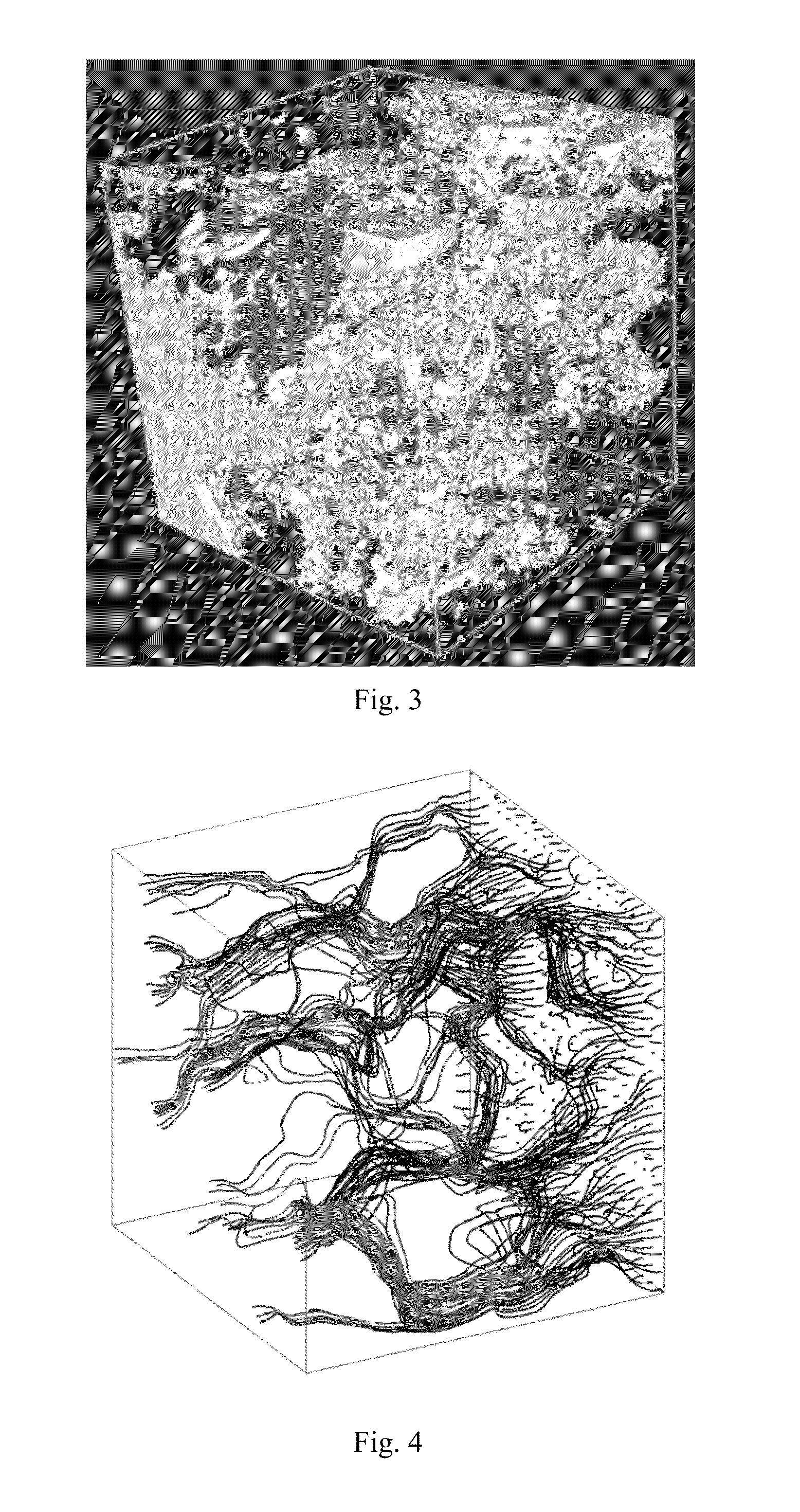Method for producing a three-dimensional characteristic model of a porous material sample for analysis of permeability characteristics
a three-dimensional characteristic model and porous material technology, applied in the field of porous material and media properties study, can solve the problems of multi-scale non-uniform structure, ultra-difficult shales study in a traditional laboratory, and carbonate formation evaluation has its own difficulties, so as to increase the accuracy of results
- Summary
- Abstract
- Description
- Claims
- Application Information
AI Technical Summary
Benefits of technology
Problems solved by technology
Method used
Image
Examples
Embodiment Construction
[0034]In the description of the present invention, as an example the claimed technology is applied to the cylindrically shaped core sample. This fact obviously cannot be considered a factor limiting the scope of possible applications of the claimed method to any other designs and forms of porous media, including drill cuttings.
[0035]First of all, core is lifted to the surface in the process of drilling and taken to the laboratory, where typically a smaller size sample is cut out for further micro tomography investigation.
[0036]Further, tomographic study of the sample is performed with sufficient resolution (with the necessary size of the pixels on the tomographic image). The result is a set of sequential images of the core, each of which is represented by a set of pixels having different shades of gray—ranging from pure white to pure black. Herein white color corresponds to the maximum bulk density in the volume, black correspond to the minimum.
[0037]The next step is to distinguish ...
PUM
 Login to View More
Login to View More Abstract
Description
Claims
Application Information
 Login to View More
Login to View More - R&D
- Intellectual Property
- Life Sciences
- Materials
- Tech Scout
- Unparalleled Data Quality
- Higher Quality Content
- 60% Fewer Hallucinations
Browse by: Latest US Patents, China's latest patents, Technical Efficacy Thesaurus, Application Domain, Technology Topic, Popular Technical Reports.
© 2025 PatSnap. All rights reserved.Legal|Privacy policy|Modern Slavery Act Transparency Statement|Sitemap|About US| Contact US: help@patsnap.com



